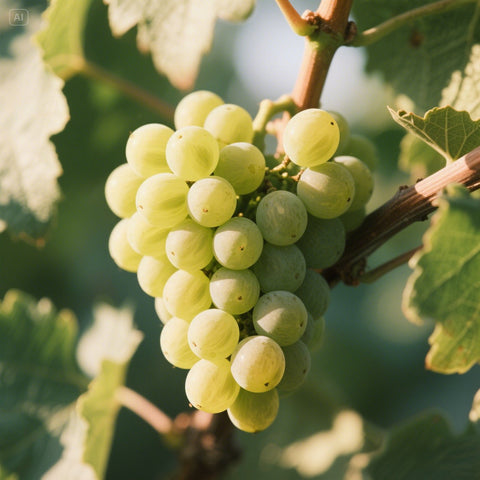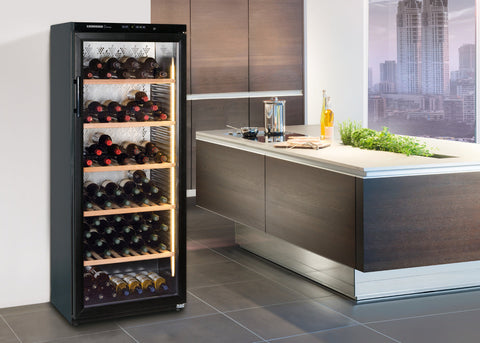Shiraz, or Syrah as it's known internationally, stands as Australia's most iconic grape variety, celebrated globally for its bold flavours, rich complexity, and remarkable ability to age. From the sun-drenched vineyards of the Barossa Valley to the cooler climes of Heathcote and the elegant expressions of McLaren Vale, Australian Shiraz offers a spectrum of styles.
Understanding how long these wines can be stored before uncorking is a crucial aspect of enjoying them at their peak, a journey that involves careful consideration of storage conditions, methods, recent notable vintages, and common pitfalls to avoid.
The Science of Ageing Shiraz: Evolution in the Bottle
When a bottle of Shiraz is laid down to age, a complex series of chemical reactions unfolds, transforming its initial characteristics into something more nuanced and integrated.
-
Primary Flavours to Secondary/Tertiary Aromas: Young Shiraz is often characterised by vibrant primary fruit flavours such as blackberry, plum, and raspberry, alongside peppery or spicy notes. As the wine ages, these primary fruit characters recede, giving way to more complex secondary aromas (developed from winemaking techniques like oak ageing) and tertiary aromas (developed from bottle ageing). These can include savoury notes of leather, tobacco, earth, truffle, dried fruits, and spice box.
-
Tannin Softening: Shiraz is typically a tannic grape. In young wines, these tannins can feel firm or astringent on the palate. With age, the tannins polymerise (join together), becoming smoother, silkier, and more integrated, contributing to a softer mouthfeel.
-
Colour Transformation: The deep purple-red hue of young Shiraz gradually evolves to a more brick-red or tawny colour as the wine ages.
-
Balance and Harmony: Ageing allows the various components of the wine – fruit, acid, tannin, and alcohol – to harmonise, creating a more balanced, complex, and enjoyable drinking experience. Not all Shiraz is made for ageing; wines designed for immediate consumption are often fruit-forward with softer tannins.
Optimal Storage Conditions: The Pillars of Preservation
-
To allow Shiraz to age gracefully and develop its full potential, consistent and appropriate storage conditions are paramount.
-
Temperature: This is arguably the most critical factor. The ideal range for long-term wine storage is generally between 12°C and 15°C (54-59°F). Consistency is more important than hitting an exact number; wide fluctuations in temperature can cause the wine to expand and contract, potentially pushing the cork out or allowing air to seep in, leading to premature oxidation. Temperatures consistently above 18°C will accelerate ageing, potentially "cooking" the wine and leading to flat, stewed flavours.
-
Humidity: Relative humidity levels between 50% and 80% are ideal. Too low humidity can dry out corks, causing them to shrink and allowing oxygen ingress. Excessively high humidity can promote mould growth on labels and corks, though it typically does not harm the wine itself if the seal is good.
-
Light: Wine should be stored in darkness, away from direct sunlight and strong artificial light. UV rays can degrade the wine's chemical compounds, leading to "light strike" and premature ageing. Dark-coloured bottles help protect the wine.
-
Vibration: Minimise vibrations. Constant movement can disturb sediments and accelerate chemical reactions, negatively impacting the ageing process. Store wine away from washing machines, heavy machinery, or frequently used doorways.
-
Bottle Position: Cork-sealed bottles should always be stored horizontally to keep the cork moist and expanded, maintaining a tight seal against oxygen. Screw-cap bottles can be stored vertically without issue.
Types of Storage Methods: From Cellar to Cabinet
Depending on your collection size and budget, various storage methods can provide adequate conditions for Shiraz.
-
Dedicated Wine Cellars: The ideal solution for serious collectors, offering consistent temperature, humidity, darkness, and minimal vibration. These can be purpose-built underground cellars or climate-controlled rooms.
-
Wine Refrigerators/Cabinets: These standalone units are designed to mimic cellar conditions, offering precise temperature and often humidity control. They come in various sizes and are excellent for medium to long-term storage for enthusiasts.
-
Passive Storage Areas: For shorter-term storage (up to a few years), a cool, dark, and stable cupboard, pantry, or basement that remains consistently below 18°C and away from heat sources can suffice. Avoid storing wine in the kitchen, laundry, or attic.
-
Off-site Wine Storage Facilities: Many urban areas offer professional, climate-controlled wine storage lockers or rooms for rent, providing optimal conditions without the need for home installation.
Best Recent Australian Vintages for Shiraz: Investing in Longevity
While every vintage produces enjoyable Shiraz, some years are particularly renowned for their quality and ageing potential. For Australian Shiraz, especially from key regions like the Barossa Valley, McLaren Vale, Clare Valley, and Coonawarra, recent outstanding vintages for cellaring include:
-
2021: Widely hailed as an exceptional vintage across many South Australian regions, producing wines of great balance, concentration, and finesse with excellent ageing potential.
-
2018: A generally strong vintage across South Australia, yielding powerful, well-structured Shiraz wines with good depth and ripeness.
-
2016: A very good to excellent vintage that produced concentrated and balanced wines with good fruit and structure.
-
2012: A highly regarded vintage, particularly in the Barossa, known for producing full-bodied, complex, and long-lived Shiraz.
-
2010: Another stellar vintage, yielding wines with impressive structure and the capacity for extended cellaring.
It is always advisable to consult specific vintage reports from reputable wine critics for particular regions and producers, as microclimates and winemaking styles can lead to variations within a vintage.
Things to Avoid: Common Pitfalls in Wine Storage
Mistakes in wine storage can quickly diminish a wine's quality and prematurely age it.
-
Heat Spikes: Any exposure to temperatures above 24°C (75°F) for extended periods can "cook" the wine, giving it a flat, stewed, or raisin-like flavour.
-
Temperature Fluctuations: Rapid or frequent swings in temperature are highly detrimental, causing the cork to expand and contract, breaking the seal and allowing oxygen in.
-
Direct Sunlight/Bright Light: UV light causes chemical reactions that spoil the wine's flavour and aroma.
-
Dry Air (for corks): Low humidity dries out corks, leading to shrinkage and oxidation.
-
Vibration: Constant movement disrupts the delicate chemical processes of ageing.
-
Strong Odours: While rare with well-sealed bottles, strong chemical or food odours in the storage environment could theoretically permeate the cork over very long periods.
-
Storing in a Regular Refrigerator for Long Term: A kitchen fridge is too cold and too dry for long-term wine storage, and the frequent opening/closing causes harmful temperature fluctuations.
Key Features:
-
Shiraz evolves in bottle, developing tertiary aromas and softer tannins.
-
Optimal storage requires consistent temperature (12-15°C), controlled humidity (50-80%), darkness, and minimal vibration.
-
Storage options range from dedicated cellars and wine fridges to cool, dark passive spaces.
-
Recent excellent Australian Shiraz vintages (e.g., 2021, 2018) offer great ageing potential.
-
Avoiding heat spikes, temperature fluctuations, light, dryness, and vibration is crucial.
-
Not all Shiraz is made for long-term ageing; check producer recommendations.
FAQ:
Q: How do I know if my Shiraz is suitable for ageing?
A: Wines suitable for ageing typically have good acidity, firm tannins, concentrated fruit, and are often from reputable producers known for age-worthy wines. Check the producer's notes or vintage charts.
Q: What happens if I store Shiraz too long?
A: If stored too long, the wine can "fall over," losing its fruit character, becoming flat, thin, or developing off-flavours, essentially tasting past its prime.
Q: Can screw-cap Shiraz age as well as corked Shiraz?
A: Yes, many winemakers believe screw caps provide a more consistent and reliable seal, allowing for excellent ageing without the risk of cork taint or drying out.
Q: What are the signs that an aged Shiraz is ready to drink?
A: Look for a slight bricking of colour, complex aromas beyond primary fruit (e.g., leather, earth, spice), and softer, more integrated tannins on the palate.
Q: Do all Australian Shiraz wines benefit from ageing?
A: No, many Australian Shiraz wines are crafted for immediate enjoyment, showcasing vibrant fruit. Only premium examples with sufficient structure and concentration are intended for long-term cellaring.




Comments (0)
There are no comments for this article. Be the first one to leave a message!